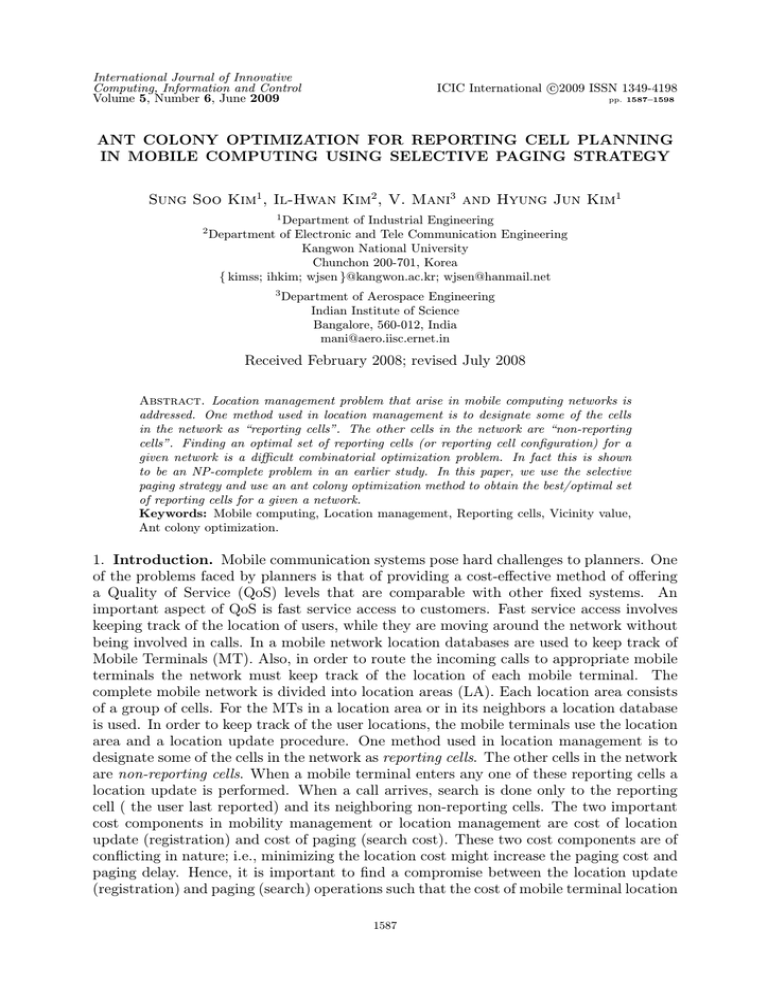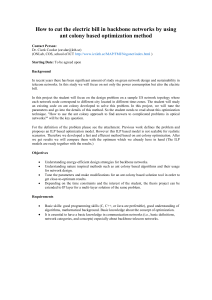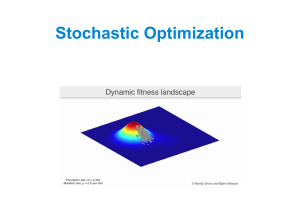International Journal of Innovative Computing, Information and Control ICIC International c
advertisement

International Journal of Innovative
Computing, Information and Control
Volume 5, Number 6, June 2009
c
ICIC International °2009
ISSN 1349-4198
pp. 1587—1598
ANT COLONY OPTIMIZATION FOR REPORTING CELL PLANNING
IN MOBILE COMPUTING USING SELECTIVE PAGING STRATEGY
Sung Soo Kim1 , Il-Hwan Kim2 , V. Mani3 and Hyung Jun Kim1
1
2
Department of Industrial Engineering
Department of Electronic and Tele Communication Engineering
Kangwon National University
Chunchon 200-701, Korea
{ kimss; ihkim; wjsen }@kangwon.ac.kr; wjsen@hanmail.net
3
Department of Aerospace Engineering
Indian Institute of Science
Bangalore, 560-012, India
mani@aero.iisc.ernet.in
Received February 2008; revised July 2008
Abstract. Location management problem that arise in mobile computing networks is
addressed. One method used in location management is to designate some of the cells
in the network as “reporting cells”. The other cells in the network are “non-reporting
cells”. Finding an optimal set of reporting cells (or reporting cell configuration) for a
given network is a difficult combinatorial optimization problem. In fact this is shown
to be an NP-complete problem in an earlier study. In this paper, we use the selective
paging strategy and use an ant colony optimization method to obtain the best/optimal set
of reporting cells for a given a network.
Keywords: Mobile computing, Location management, Reporting cells, Vicinity value,
Ant colony optimization.
1. Introduction. Mobile communication systems pose hard challenges to planners. One
of the problems faced by planners is that of providing a cost-effective method of offering
a Quality of Service (QoS) levels that are comparable with other fixed systems. An
important aspect of QoS is fast service access to customers. Fast service access involves
keeping track of the location of users, while they are moving around the network without
being involved in calls. In a mobile network location databases are used to keep track of
Mobile Terminals (MT). Also, in order to route the incoming calls to appropriate mobile
terminals the network must keep track of the location of each mobile terminal. The
complete mobile network is divided into location areas (LA). Each location area consists
of a group of cells. For the MTs in a location area or in its neighbors a location database
is used. In order to keep track of the user locations, the mobile terminals use the location
area and a location update procedure. One method used in location management is to
designate some of the cells in the network as reporting cells. The other cells in the network
are non-reporting cells. When a mobile terminal enters any one of these reporting cells a
location update is performed. When a call arrives, search is done only to the reporting
cell ( the user last reported) and its neighboring non-reporting cells. The two important
cost components in mobility management or location management are cost of location
update (registration) and cost of paging (search cost). These two cost components are of
conflicting in nature; i.e., minimizing the location cost might increase the paging cost and
paging delay. Hence, it is important to find a compromise between the location update
(registration) and paging (search) operations such that the cost of mobile terminal location
1587


